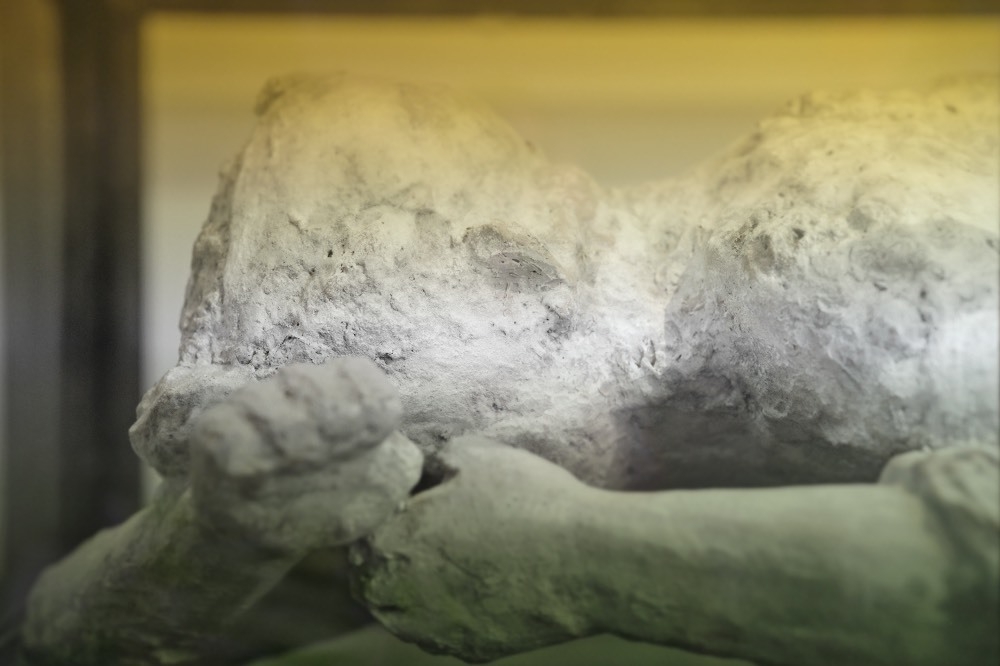The photographs in the exhibition are from the Roman city of Pompeii, which was buried by volcanic ash in the year 79. Around 2,000 of the city’s inhabitants were affected by the eruption of Vesuvius. When excavations began in the 18th century, archaeologists discovered unexplained cavities beneath the layers of soil and ash. Through a hundred years of excavations, these remained a mystery, until attempts were made to fill the cavities with plaster. When this hardened and the surrounding ash was removed, 1:1 negative casts emerged of people frozen in the face of the inevitable tragedy. From these naturally created ‘moulds’, matted, rough plaster casts were evoked that embodied the bodies encased by the ash rain nearly two millennia earlier.
The enigmatic plaster casts are located at several intersections and defy categorization. The plaster figures have been produced in the last 150 years, but from molds that were formed 2,000 years ago. Are they ‘ancient’ or ‘modern’, are they man-made or natural? Does it make sense to refer to them as sculptures or is this something else? Among other things, Gleditsch’s photographs touch on issues of transience, and the moral implications of photographing a 2,000-year-old direct impression of lived life, as opposed to a marble sculpture.
A recurring feature of Gleditsch’s production is the emphasis on how unintentional shifts in meaning characterize the communication of historical events, and this exhibition is no exception. The reddish-brown tone that dominated the walls of houses in Pompeii is perhaps the most iconic color of antiquity. In the 18th and 19th centuries, Pompeian red became a status symbol in conditioned homes in Northern Europe, and countless living rooms were painted in the color that became a marker both for antiquity and for the new field of archaeology. However, recent research has cast doubt on whether the walls of Pompeii were originally red or yellow. Through exposure to the fiery hot gas from the volcano, the pigment may have been baked and changed color from yellow ocher to red.
Like the plaster casts, Gleditsch reads this iconic color as a hybrid between a chemical and a social construction – a phenomenon at the intersection between nature and culture. In the exhibition, Pompeii’s colors are manifested as ambivalent historical layers through which the photographs are viewed. With the exhibition On the Whispering Wind, Gleditsch juxtaposes the plaster casts and the colors as two accidental phenomena evoked by the ashes.
Read the text Langt inni fjellet, written by author Hanne Ørstavik on the occasion of the exhibition.
The exhibition is supported by the Norwegian Cultural Council and the Visual Artists’ Remuneration Fund.




